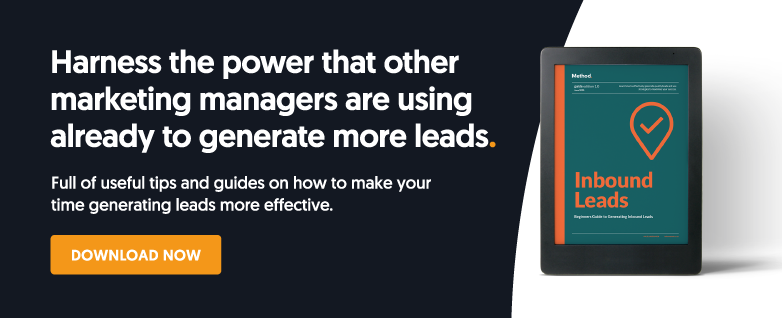An unopened email is not only a waste of time, resources and potential, it's also an indicator of the consumers lack of interest in your brand. So how do you ensure that each written communication which lands in your customer's inbox is opened, digested and valued? Here we explain how.
Spring clean your email contacts
First up, have you explored if your email audience remains interested in receiving communications from you? Ascertain which email addresses are still active and be sure to remove redundant addresses. You can also explore click through rates from your email contacts. Suppose it's clear that an individual has neither opened an email from you nor shown any interest in your content for six months. Attempt to win back dormant email account interest with an exclusive offer such as a personal message or a funny break-up quip asking for general feedback. If this doesn’t work, don't stress., remove such contacts from your global list. Continually blanket emailing contacts will reflect poorly on you, making your brand appear lazy and uninspired.
Segment your List
Dividing email lists into groups based on purchasing behaviour, product preferences, special interests and demographic profile is a time-proven email marketing strategy. Referred to as ‘list segmentation’, this practice helps product or service providers resonate directly with their audience, providing timely information to them which is consistent with their pain points and passions. MailChimp has discovered that, as users segment email lists based on location and job title, open rates increase by almost 19%, and click-through rates by nearly 22% compared to non-segmented sends. Maximising efficiency and interest by segmenting your email list communicates to your consumers that you know, understand, and appreciate them as individuals instead of simply a member of a catchment group.
Once segments are established, email campaigns can be finely tuned to directly appeal to the demographic you are targeting, using language and content which engages and excites. This will also reduce the number of people choosing to unsubscribe, improve revenue and increase the volume of unique visitors to the company website.
Ensure your communications don't get filed under spam, spam and more spam
The dreaded spam folder is a black hole of nothingness, a vortex that sucks in even the most engaging emails to commit them to a folder that is almost never opened. Although modern spam folders are more sophisticated at identifying what it is appropriate to filter out from its user, no brand is immune to being wrongly flagged up as spam, so each marketing manager must be aware of how to avoid falling foul of the deadly spam folder.
First up, ensure all your email contacts are sent through verified domains and that these contacts have physically consented to appear on your mailing list. Alternatively, include a click through to allow current subscribers to unsubscribe easily. Nobody likes being tricked into accepting pointless emails. Use an IP address for which previous users have not created ‘spam content’ flags for content such as yours historically. Make sure your coding is clean and the location is switched on. Avoid buzz words such as ‘exclusive’, ‘discounted’, ‘buy’ or ‘limited time only’ in subject lines; This can give the impression of being forced and coercive.
Finally and most importantly, make sure you never falsely lure your consumers to click through links on emails. Some brands lead audiences towards links that are either unavailable or which include items marked at higher prices than initially claimed. This is a well-known deception known as bait and switch. Not only is this fraudulent and dishonest, but it's also an empty tactic that misses out on valuable opportunities to educate your audience and engage long term with shared values with a strategy that grows brand loyalty.
When email open rates don't match the average, the most likely reason consumers are not opening your communications is because they are being sent out at a sub-optimal time. For example, make sure your email shot doesn't coincide with pubs hosting a happy hour or at the conclusion of the 9-5 working day. Also, there’s a 'rush hour' when people are more likely to be focussing on their phones or laptops. Identifying this peak timing for generating high traffic will help generate sales. Based on research conducted by MailChimp, it has been found that Tuesday is the best day to send emails for optimal open rates, followed by Wednesday then Thursday. Understanding what time of the day is best to distribute emails is essential. Data shows most emails will be opened and digested within the first hour of your communication being sent. The drop off percentage falls rapidly after this golden hour. Most research points towards morning as the best time to distribute emails. As your audience awakes; Its members will habitually check their phones.
The working day begins earlier and ends later with the evolution of handheld technology. Peak time is 6am. If that's too early for you, schedule an e-mail shot that will get to work before you do.
Your subject line is your key sales pitch
Too many brands have become obsessed with the idea of conceptualising clever subject lines to grab their audience's attention and excite them. The subject of an email should be regarded in the same way as the cover of a book or the front page of a newspaper. Think of your subject space as your prime selling pitch. It would help if you aimed to engage your audience with your content for longer than the first few sentences of your email. The most effective subject lines communicate shared values. You need to convince the recipient that the email contains information that will positively impact their lives and/or business. Steer clear of generic one-liners which will switch audiences off immediately. The key is convincing your reader that this communication was designed with only them in mind and uses leading language that draws your audience in including personalisation like their first name. Remember to use language which feels on a level with the audience. Avoid overcomplicating the message or being too cryptic. Numbers have also proven successful in capturing attention, so 5,4,3,2,1 are you still reading this!
Direct your email at just one individual
When you cast your net too wide you will inevitably catch something undesirable. If you hone in on reeling in a top-quality fish, your results will most likely be much more satisfying. Personalise your content. This is where buyer personas come into play. If you fully understand who you're communicating with, pain points, values and drivers can be identified and addressed. It is essential that you comprehend what your consumers like and, equally, dislike. To obtain this information, send out regular mini-surveys, use IG’s ‘ask me anything’ feature and respond to comments on social media regularly.
Try to retain familiarity with your tone and choice of words. Avoid sentences that feel too coercive and forced. Remember, we are all saturated with an overwhelming volume of online content. By establishing a friendly and honest relationship with your audience, emails will be opened with a higher frequency, and click-through and potential leads will quickly translate into sales. Always keep the original purpose of your email in mind and don't simply fire off scheduled communications. If you find yourself with fewer things to write about, skip your emailing routine until you have something useful or interesting. Think quality, not quantity.
Make sure your emails are accessible on mobile devices.
A massive 58% of the UK population now regularly accesses the internet via mobile. A third of people now view their emails using a mobile device, meaning that all content needs to be mobile friendly to appear credible and current. If email marketing and landing pages are compatible with mobile design, click-through and conversion rates will inevitably increase.
For best results, make sure your mobile-friendly email marketing experience is bulletproof. Don't neglect to check that one version of a single responsive design offers an optimal user experience across all devices.





